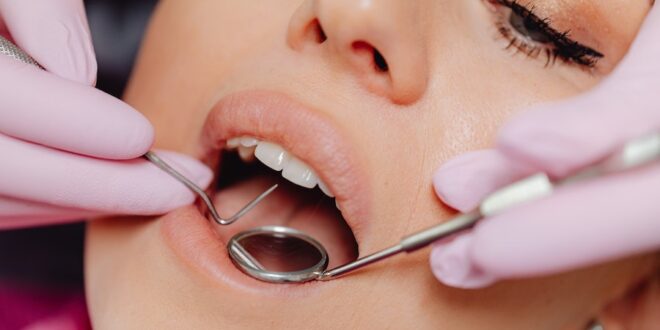Ivory has long been a highly sought-after material, especially in certain parts of the world, particularly Asia.
The demand for ivory has created a lucrative market, leading some individuals to question whether human teeth are also ivory.
This inquiry gains even more significance when considering the disturbing trend of using human teeth in creating jewelry by certain designers.
While this practice’s moral and ethical implications are concerning, our focus here in this article is exploring the accuracy of classifying human teeth as ivory.
Are Human Teeth Ivory?
All mammalian teeth, including human teeth, can technically be classified as ivory. However, the game takes a different turn
when we talk about the ivory trade.
“ivory trade” typically refers to the trafficking and commercialization of teeth large enough to be carved or sculpted for monetary value.
It means that while technically human teeth can be considered ivory, they do not fall into the category of ivory sought after in the illegal trade market.
What Is Ivory?
Ivory is a term used to describe the teeth or tusks of mammals that are of commercial interest and large enough to be curved. In the case of human teeth, ivory refers to the middle layer of the teeth, which is the dentine.
Ivory holds immense value in various industries, such as art and craftsmanship. Its durability, smooth texture, and ease to curve make it highly sought after.
However, there are ethical concerns surrounding the trade and use of ivory, as it often involves the illegal poaching of endangered animals.
Parts Of Human Teeth
The human tooth can be divided into three distinct sections:
- Crown – The visible portion of the tooth covers almost two-thirds of its structure and lies above the gums. The crown is the part of the tooth we can see when we smile or open our mouths.
- Neck – This is a small and narrow portion that connects the crown and the root. It serves as a transitional area between these two parts of the tooth.
- Root – Makes up approximately one-third of the tooth and is deeply embedded within the bone that supports it.
This part of the tooth lies below the gums and is usually not visible in healthy teeth. The root provides stability and strength to the tooth, anchoring it firmly within the jawbone.
The Composition Of Human Teeth
The teeth have different layers, each with unique properties and functions.
Enamel
Enamel is the tough and protective outer layer of the teeth, formed by special cells called ameloblast cells.
The composition of enamel primarily comprises 96.5% inorganic substances and 1% organic substances. Water takes the remaining percentage, 1% to 4%.
The inorganic substances in enamel are mainly calcium and phosphate ions. These ions combine to form a strong hydroxyapatite crystal structure, which enables the enamel to withstand the high forces exerted during chewing and biting.
Dentin
Dentin is a living tissue comprising tiny tubules called dentinal tubules located at the junction between the cementum and enamel and within the pulp.
It is formed by specialized cells known as odontoblasts. Despite its calcified nature, dentin possesses a unique combination of compressibility and elasticity.
It can sense hot and cold stimuli from food and beverages because it’s a living tissue. Dentin’s natural colour is slightly yellowish, and its composition consists of approximately 70% inorganic and 30% organic matter, much like enamel.
However, the hydroxyapatite crystals found within dentin are smaller than those in enamel. And this makes dentin somewhat softer than enamel.
Cementum
Cementum, a structure similar to bone, encases the tooth’s root and acts as a connector between the tooth and the surrounding bone.
The cementum seamlessly joins with the enamel at the cementoenamel junction, forming a strong bond. It contains 55% organic compounds and 45% inorganic compounds.
The organic component primarily comprises Type I collagen and protein polysaccharides that provide structural support and flexibility.
Then again, the inorganic portion mainly comprises calcium and phosphate ions, which contribute to the hardness and durability of cementum.
Pulp
It is the innermost part of the tooth structure. With numerous blood vessels and nerves, this region plays a crucial role in maintaining the overall vitality of the tooth.
There are two types of pulp – coronal pulp, located in the crown, and radicular pulp, found within the roots.
In addition to its vascular supply, the composition of the pulp includes neurons, fibroblasts, macrophages, and vascular tissue.
The tooth’s soft and living portion contains odontoblasts cells responsible for dentin formation.
Do Your Teeth Have Your DNA?
Teeth and bones are the primary DNA source in degraded or decomposed human remains. When identifying an individual’s genetic material, teeth are particularly beneficial due to their unique composition and location in the jaw bone.
Unlike other bones in the body, teeth are protected by the hard enamel layer, which acts as a shield against external elements that can compromise the DNA.
This protective layer helps to preserve the genetic material within the teeth, making them an ideal source for extracting DNA.
Moreover, the location of teeth within the jaw bone further contributes to their suitability as a DNA source.
Teeth are firmly anchored within the jaw bone, providing an additional layer of protection compared to other bones in the body.
This stability prevents DNA degradation and increases the likelihood of successfully extracting intact genetic material.
Main Function, Human Of Teeth
Human teeth serve several important functions in the human body. One of the main functions of teeth is chewing and grinding food.
The different types of teeth, such as incisors, canines, premolars, and molars, are specifically designed to break down food into smaller pieces, making it easier to digest.
This process is crucial for the overall digestion and absorption of nutrients. In addition to that, the teeth also play a role in aesthetics and smiles.
A healthy set of teeth can significantly contribute to a person’s appearance and self-confidence. Teeth support the lips and cheeks and maintain a natural face contour. They contribute to facial aesthetics and prevent the collapse of facial features.
Elephants Tusks Evolved From Their Teeth!
Elephants have ivory tusks as a result of evolutionary processes. These tusks evolved from the teeth and gave the species a significant advantage.
They serve various purposes, including digging, lifting objects, stripping bark from trees, and defence against predators. Additionally, the tusks protect the trunk, which is used for drinking, breathing, and eating.
Similar to humans being left or right-handed, elephants also have this preference for the left or right tusk. The dominant tusk is typically more worn down due to frequent use.
Interestingly, both male and female African elephants have tusks, while only male Asian elephants and a certain percentage of males today have tusks.
Why Do People Hunt Elephants For Their Tusks?
The high demand for ivory in the global market is the number one cause of the illegal poaching of elephant ivory.
Its beauty has been prized for centuries, leading to a lucrative trade that fuels the desire to hunt elephants illegally.
The rising affluence in certain countries, particularly in Asia, has increased the demand for ivory products such as jewelry and ornaments. This demand drives poachers to illegally kill elephants and smuggle their tusks, devastatingly impacting elephant populations.
Another factor contributing to the hunting of elephants for their tusks is poverty and lack of alternative livelihood in some areas where elephants are.
The local communities may rely on poaching as a means of survival. The high value of ivory provides an economic incentive for impoverished individuals to engage in illegal hunting activities.
And in some cases, corrupt government officials are the ones who are leading this dirty trade. This is why international organizations combating ivory trading are shifting their focus to the end markets to try and reduce the need for it.
Furthermore, cultural and traditional beliefs also play a role in driving the demand for ivory. In some cultures, ivory is considered a symbol of status, luck, and wealth.
Despite efforts to raise awareness about the negative impacts of the ivory trade and the importance of elephant conservation, these deep-rooted cultural beliefs are proving to be challenging to change.
Conclusion
The above discussion confirms that human teeth are indeed ivory. However, their small size poses a challenge in curving and shaping them, making it difficult for them to qualify in the ivory trade.
The ivory trade typically involves larger pieces of ivory that hold monetary value. While human teeth may share similar characteristics with ivory, their size limits their potential for commercial use.
Therefore, while human teeth can technically be considered ivory, they do not hold the same significance or value as larger pieces of ivory typically associated with the trade.
 Being Human
Being Human




